Review: 2010 Subaru Outback
Back in the late ‘90s, Hollywood unleashed a barrage of light-hearted, cookie-cutter teen movies. The gist: quasi-geek exists just outside the fringe of the high school “in crowd.” He’s intrinsically smart, casually cool, but socially a bit awkward. He’s followed by legions of adoring and affable nerds, cast in the shadows of the popular conformists. Inevitably, our geek has his eyes on the prettiest girl in school and a thirst for leaping the social chasm to popularity. Predictably, this is accomplished through a bit of dumb luck, by selling his soul through transformational makeover, and by alienating those who supported him. Allow me to introduce the latest geek-turned-sellout: the 2010 Subaru Outback.
Not to go off on too Faragonian of a branding rant, contrary to the latest “It’s what makes a Subaru a Subaru” campaign, “it” is nowhere present in the new Subaru Outback. Yes, the usual hardware bits are there. Boxer engine? Check. Symmetrical All-Wheel-Drive? Check. But past these binary, objective metrics, the essence of a true Subaru is woefully absent, starting with the styling . . .
I’ll forgive the new Outback’s wacky headlights, weird taillights, and gimmicky body cladding. Let’s face it: the refreshing cleanliness of the last generation Legacy/Outback’s styling was too good to last. But I can’t the turn a blind eye to the Outback’s thyroid condition that balloons the Outback out of the clever off-road-wagon segment it created, square into the congested crowd of bloated CUVs.
Towering more than four inches higher than its predecessor, spanning two inches more across the beam, standing another awkward inch higher off its tires, the new Outback looks—no, is huge. The super-chunk roof rails are grossly exaggerated (until you discover the trick design that allows the crossbars to disconnect and swing 90 degrees to find residence integrated in the longitudinal rails). The rear quarter view screams “Venza!”—which is like shouting “movie” in a crowded firehouse. Curiously, there wasn’t a Tribeca on the showroom floor. Cannibalism avoidance? Either that or the former “flying vagina” was hidden by the swollen Outback.
Inside, hoping—praying—for refuge from the calamity outside, you’re greeted by wide, comfy seats and increased legroom for all five passengers, thanks to a stretched wheelbase and the aforementioned middle aged spread. Despite the front captain’s chairs’ higher hip point, rear toe-room is just as miserable as the old model’s. The 60/40 split rear seatbacks now recline, but the pivot point is too high; occupants feel awkwardly contorted instead of comfortably relaxed.
Oddly, the Outback is two inches shorter than previously, sacrificed in the cargo bay. Fortunately, the height gain and the taller hatch opening collaborate with revised rear suspension packaging (now multi-link instead of a strut) to allow more junk in your trunk.
The Outback helped start the trend toward big/multiple/panorama sunroofs, yet the 2010 model reverts to a classic-sized hole over the front seats only. Probably for the better, as you don’t need more light cast upon the smorgasbord of plastics that muddle the instrument panel.
Gone is the understated and subtle classiness of the previous Outbagacy’s upscale interior bits. Cheezy glitz defines the rock-hard polymers that mimic textured stainless steel on the gaudy and protruding tall center stack (an annoyingly awful new Subaru family trait) and [faux] aluminum on the trim wings spraying out to the doors. Subaru grained and sheened the top shelf of the instrument panel convincingly enough to make you think it’s from Ingolstadt. Nein.
The Outback’s ergonomics couldn’t be further from Audi’s if they were designed by Daewoo. Every button on the Outback’s dash now requires reading glasses, a precise finger and a map. Twin Big Gulps and a swollen armrest bin take precedence over the handbrake, which has been demoted to a tiny button buried left of the steering column amidst a myriad of other tiny, illegible, and obstructed switches for stability control, external mirrors, trunk release, and a bunch of curious blanks. To compensate, the twin steering column stalks are chunkier. Thanks. So much.
My tester was a 2.5i Premium CVT, equipped with Subaru’s standard and most popular engine. Subie’s [allegedly] massaged the 2.5-liter Boxer-4 for improved economy and driveability, but with no marked increase in dyno performance (170 hp/170 ft-lbs). It doesn’t matter. Subaru’s latest gee-wizardry is my good grief: the “Lineartronic” chain-driven CVT.
Rather than expound on what it’s supposed to do, let me tell you what the powertrain really does. It tips in painfully slow off idle, winds in a thrashy tizz up to max horsepower at 5600 rpm and festers there. If there were anything resembling an exhaust note, it might remind you there’s a Boxer under the hood; gone is the traditional Subie burble. Instead, from the minute you start rolling, you’re annoyed by a constant cosmic din of CVT chain noise that the Ford Freestyle’s CVT never had on its worst day, even as an early prototype.
Meanwhile, you’re waiting for acceleration to happen. Wait long enough and you’ll get to sixty miles per hour—even if you can’t quite remember quite how it happened until the morning after. You can slap the squat shift lever into manu-matic mode and flop through simulated gearshifts as if were a really crappy traditional automatic transmission. Appeasing to the lab coats at the EPA, this powertrain combo somehow manages to muster 29 mpg under optimal highway conditions. Color me indifferent; claimed driveability is an epic fail.
Wagonistas of Subaru faith seeking dynamic chassis goodness were exiled when the Legacy Wagon died in ’08. The previous Outback was not exactly light on its feet. While the ground clearance is a boon to adventurers, it’s a bane to roadgoers as exaggerated primary dance moves (roll, dive, and squat) make hustling corners ill-advised. The 2010 is no different.
The Outback’s steering gets a welcomed hydraulic boost at parking lot speeds. But as soon as the sunburst-backlit speedometer needle goes north of ten, the helm goes novicane numb and becomes lethargically slow. Wafting down the boulevard, the ride—especially from the rear axle—has gone all jiggly (in addition to the preexisting harshness). “Plush” does not seem to be a word in the Subaru vernacular. That’s a shame, as they’ve deprived this car of anything resembling fun.
Let’s do the math.
Subaru’s once trademark all-wheel-drive is a “so what” in the market segment the Outback now occupies. The virtues of the Boxer engine are all but diminished to irrelevance by the entire vehicle’s lousy dynamic performance. All of which leaves the 2010 Outback nothing more than an awkwardly bloated carcass of a what used to be an interesting car. But then there’s the other calculation . . .
Pandering to the least common consumer denominator by creating yet another lifeless, overgrown, misguided fashion-trend of a rolling appliance (read: CUV) will guarantee Subaru’s continued sales trajectory. It’s a winning model perfected by its new step-parent Toyota, which makes this revelation of suck all-the-less surprising.
At the end of the stereotypical teen movie, the geek-turned-stud usually recognizes the collateral damages of his foolish ways, and returns with renewed self-confidence, truer to himself, ultimately a better person for it. However, punch-drunk on the elixir of newfound sales popularity, it’s unlikely Subaru will look back—save to fly the bird to its wide-eyed, once-loyal nerds.
More by Jonathan Gregory
Latest Car Reviews
Read moreLatest Product Reviews
Read moreRecent Comments
- Tane94 Blue Mini, love Minis because it's total custom ordering and the S has the BMW turbo engine.
- AZFelix What could possibly go wrong with putting your life in the robotic hands of precision crafted and expertly programmed machinery?
- Orange260z I'm facing the "tire aging out" issue as well - the Conti ECS on my 911 have 2017 date codes but have lots (likely >70%) tread remaining. The tires have spent quite little time in the sun, as the car has become a garage queen and has likely had ~10K kms put on in the last 5 years. I did notice that they were getting harder last year, as the car pushes more in corners and the back end breaks loose under heavy acceleration. I'll have to do a careful inspection for cracks when I get the car out for the summer in the coming weeks.
- VoGhost Interesting comments. Back in reality, AV is already here, and the experience to date has been that AV is far safer than most drivers. But I guess your "news" didn't tell you that, for some reason.
- Doc423 Come try to take it, Pal. Environmental Whacko.



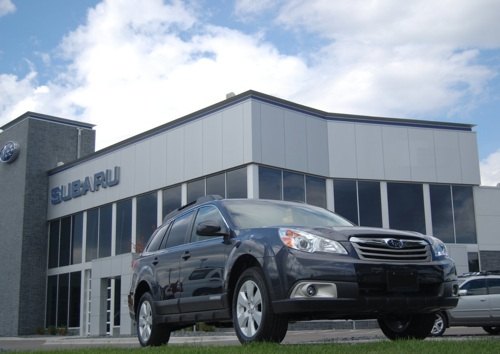





















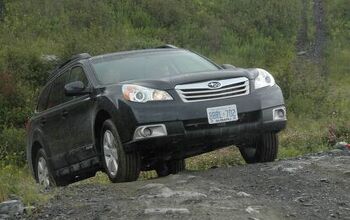
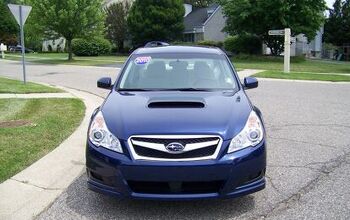

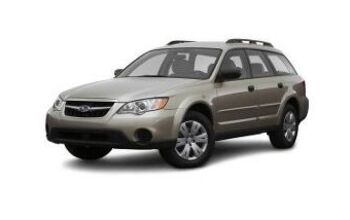
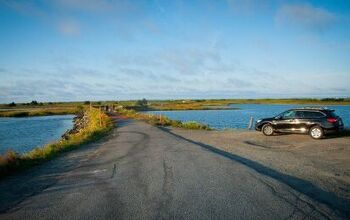










Comments
Join the conversation
Let the majority of these comments stand as a record and testament to the short sightedness and insecurity of pre 2010 Outback owners. The 2010 Outback trounced the 2009 Outback in US sales. Every year the Outback did even better until the sales more then doubled the "wonderous" 2009 in 2012.
So, looking back as a Monday-morning quarterback, how did this article age? Horribly. Never mind the whiney narrative about the looks, enlarged size & drivetrain (all subjective), but obviously the public responded strongly, with sales finally slagging off in late 2020 as Covid restricted supplies like every other manufacturer. 2021 154,623 2020 153,290 2019 181,178 2018 178,854 2017 188,886 2016 182,898 2015 152,294 2014 138,790 2013 118,049 2012 117,553 2011 104,405 2010 93,148